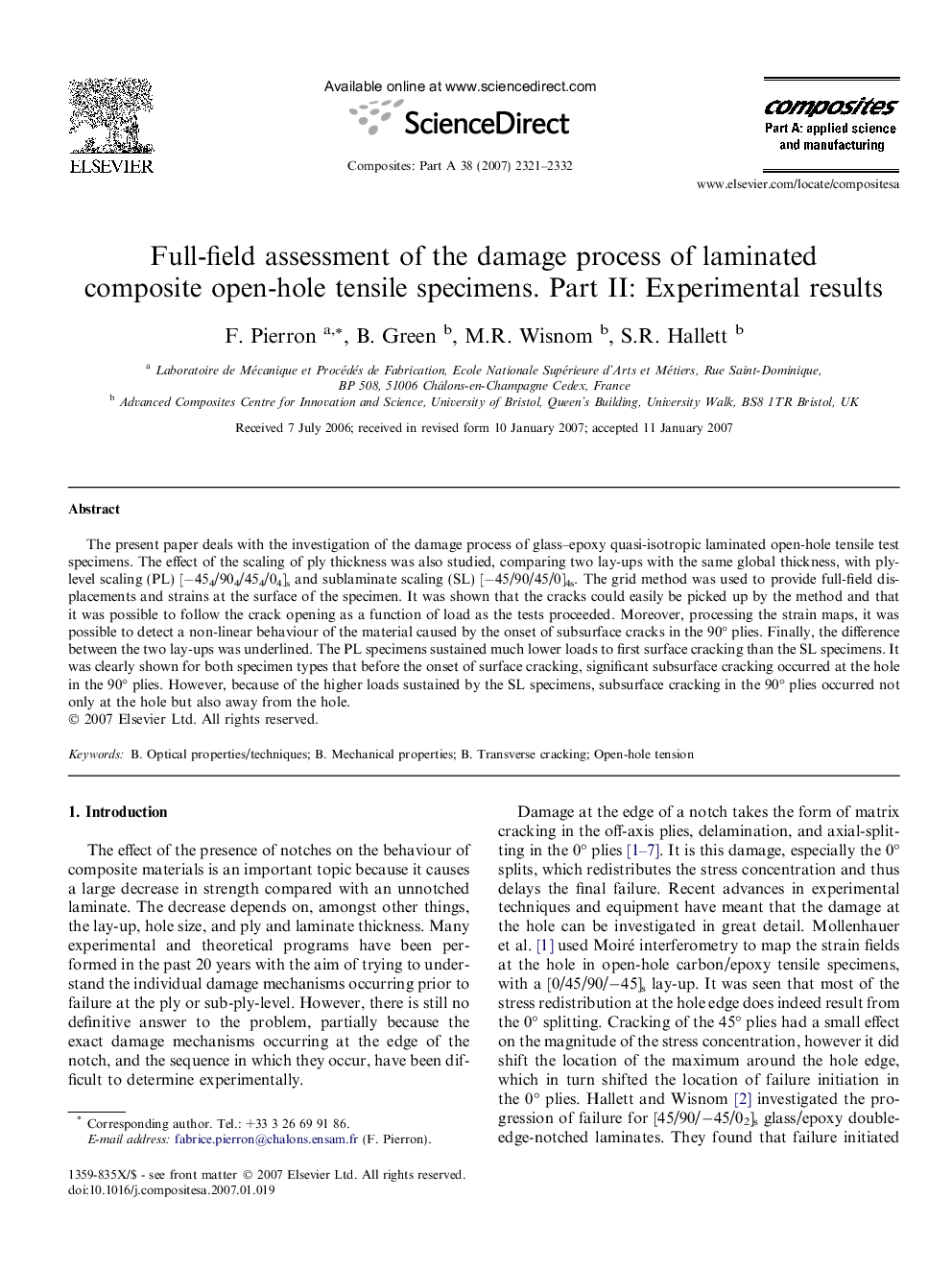| Article ID | Journal | Published Year | Pages | File Type |
|---|---|---|---|---|
| 1468086 | Composites Part A: Applied Science and Manufacturing | 2007 | 12 Pages |
The present paper deals with the investigation of the damage process of glass–epoxy quasi-isotropic laminated open-hole tensile test specimens. The effect of the scaling of ply thickness was also studied, comparing two lay-ups with the same global thickness, with ply-level scaling (PL) [−454/904/454/04]s and sublaminate scaling (SL) [−45/90/45/0]4s. The grid method was used to provide full-field displacements and strains at the surface of the specimen. It was shown that the cracks could easily be picked up by the method and that it was possible to follow the crack opening as a function of load as the tests proceeded. Moreover, processing the strain maps, it was possible to detect a non-linear behaviour of the material caused by the onset of subsurface cracks in the 90° plies. Finally, the difference between the two lay-ups was underlined. The PL specimens sustained much lower loads to first surface cracking than the SL specimens. It was clearly shown for both specimen types that before the onset of surface cracking, significant subsurface cracking occurred at the hole in the 90° plies. However, because of the higher loads sustained by the SL specimens, subsurface cracking in the 90° plies occurred not only at the hole but also away from the hole.
